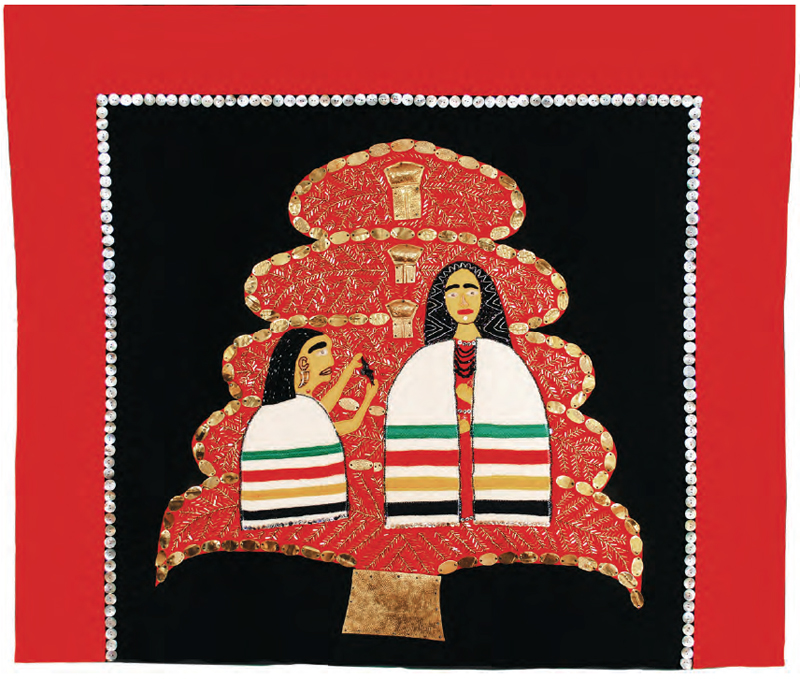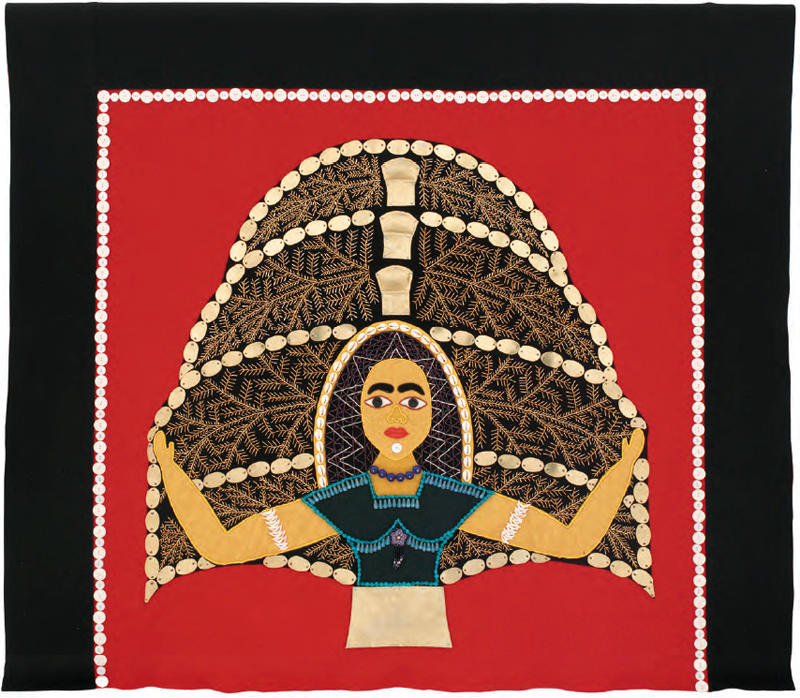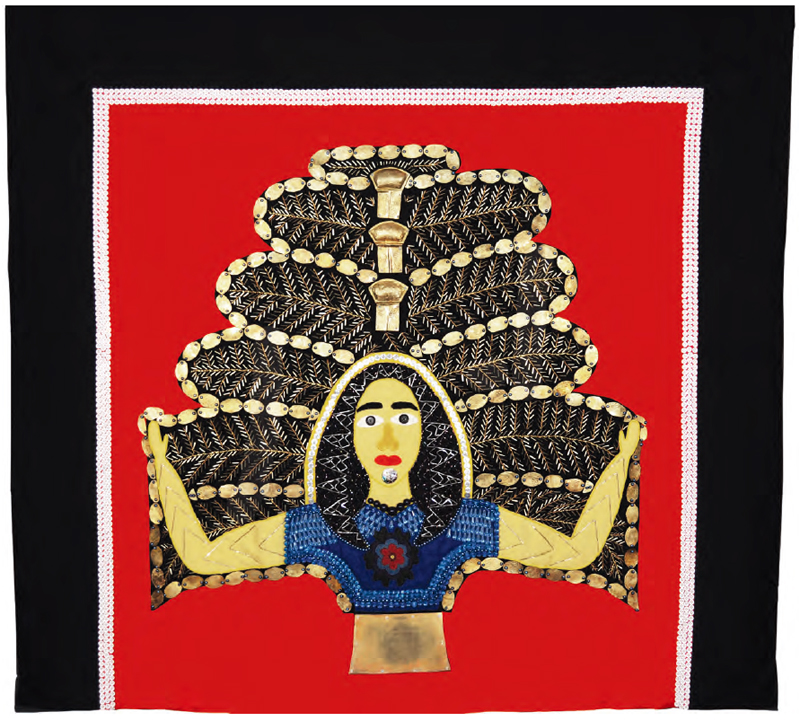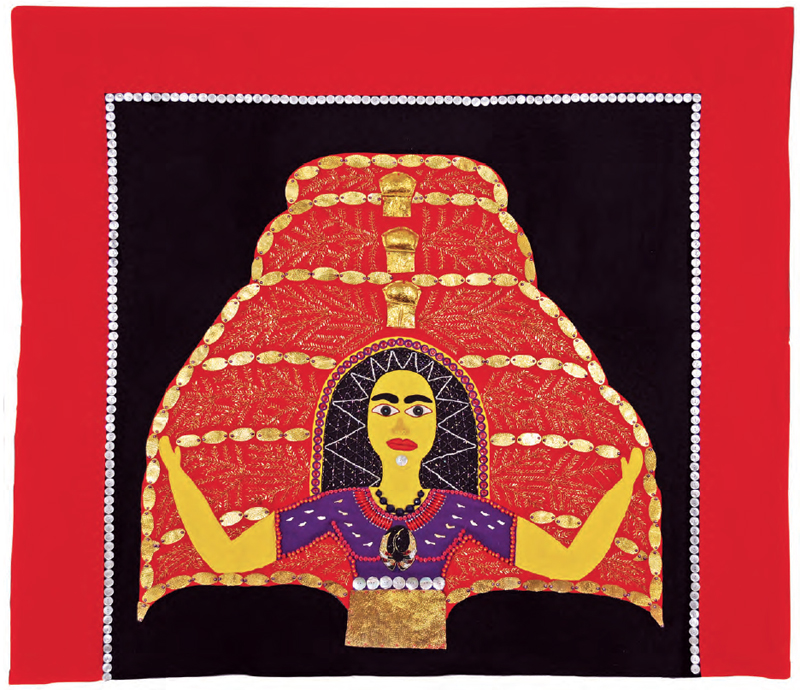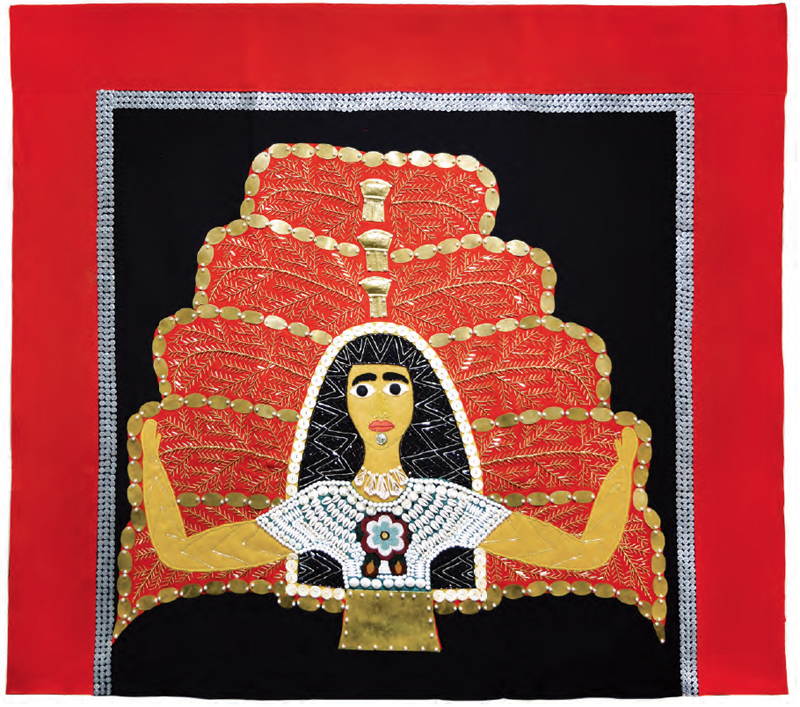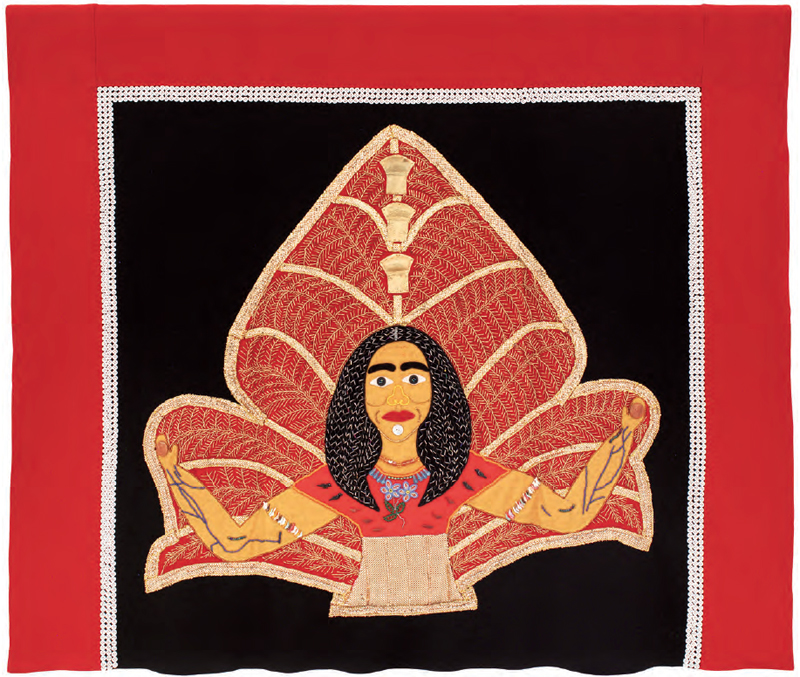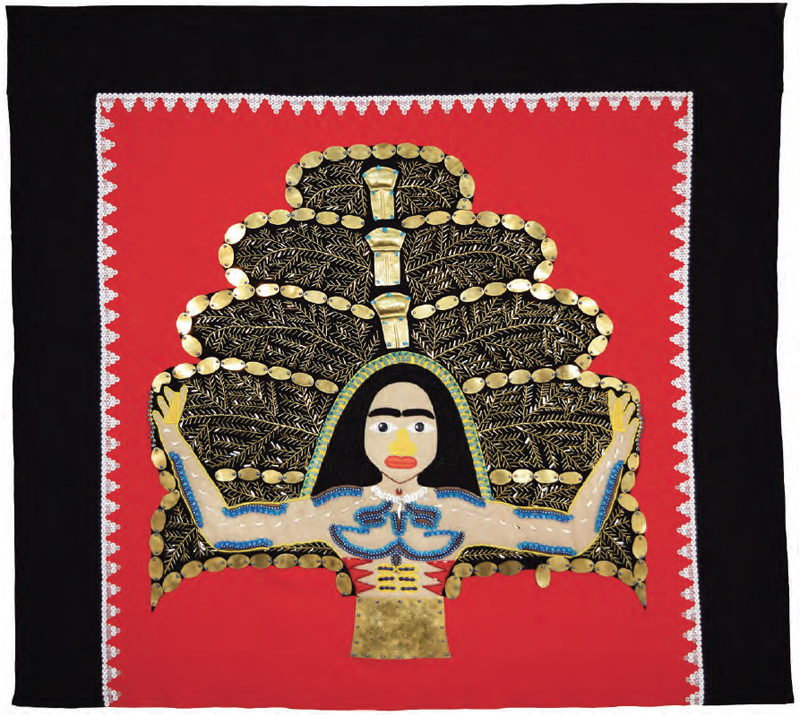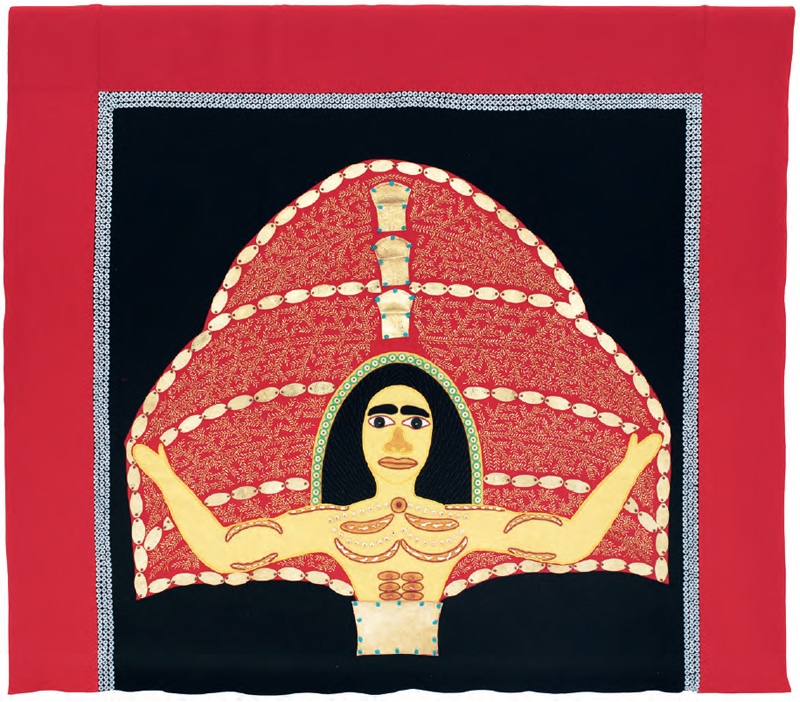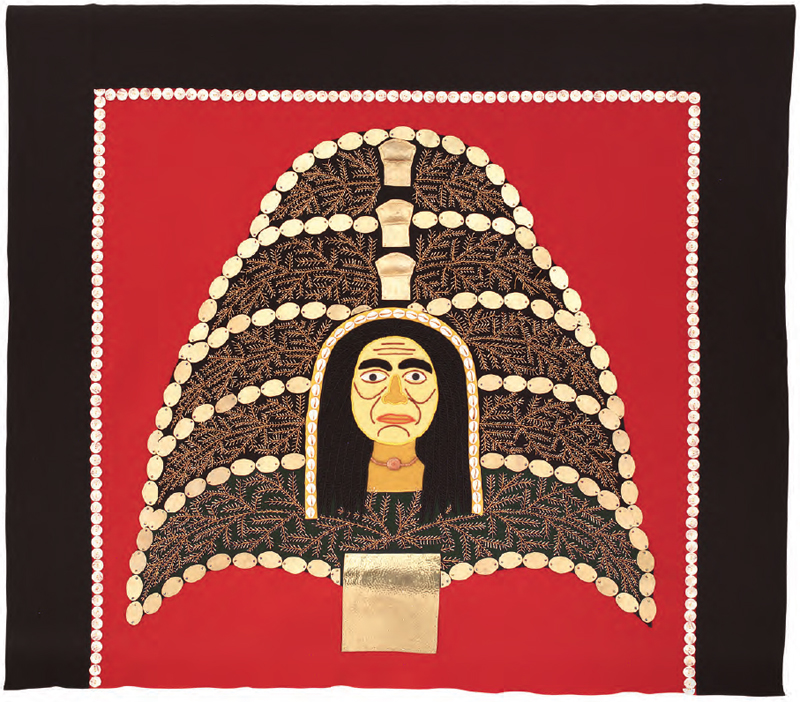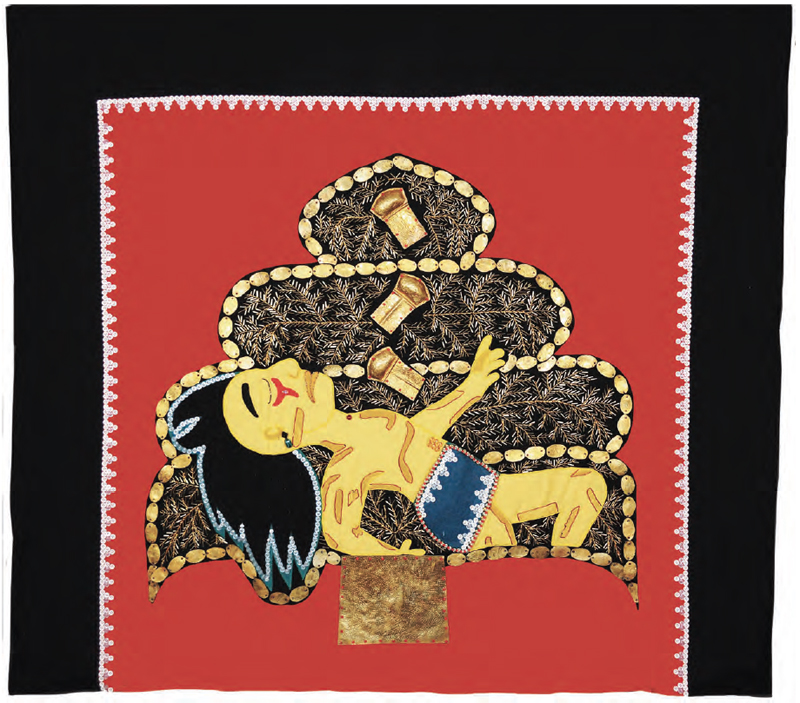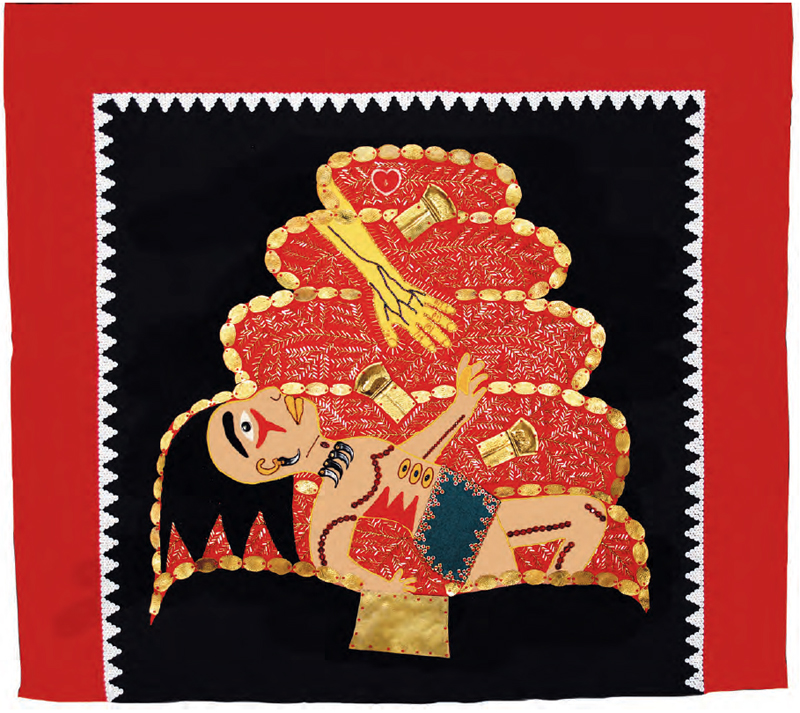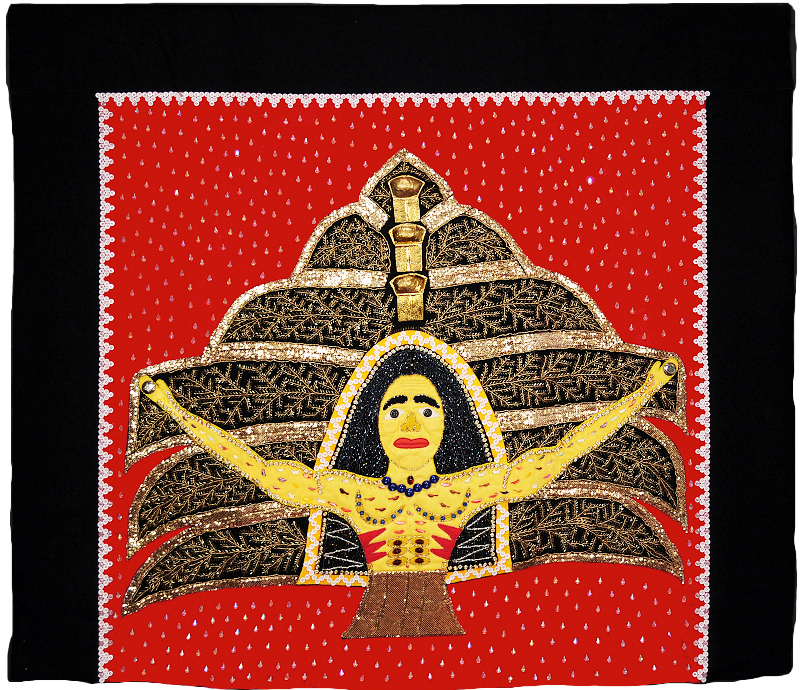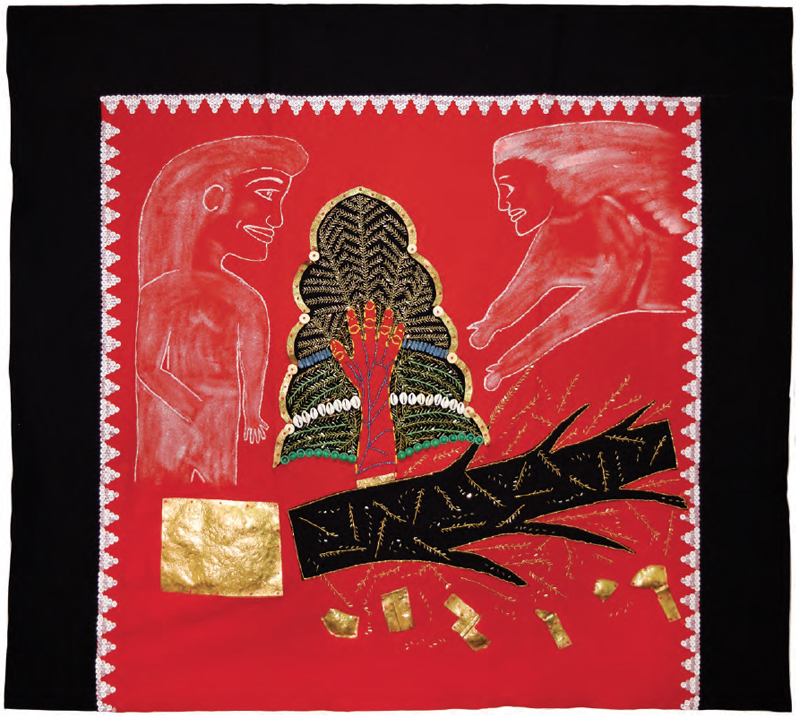The Story of K’iid Kiyaas: Hazel Wilson and the Golden Spruce
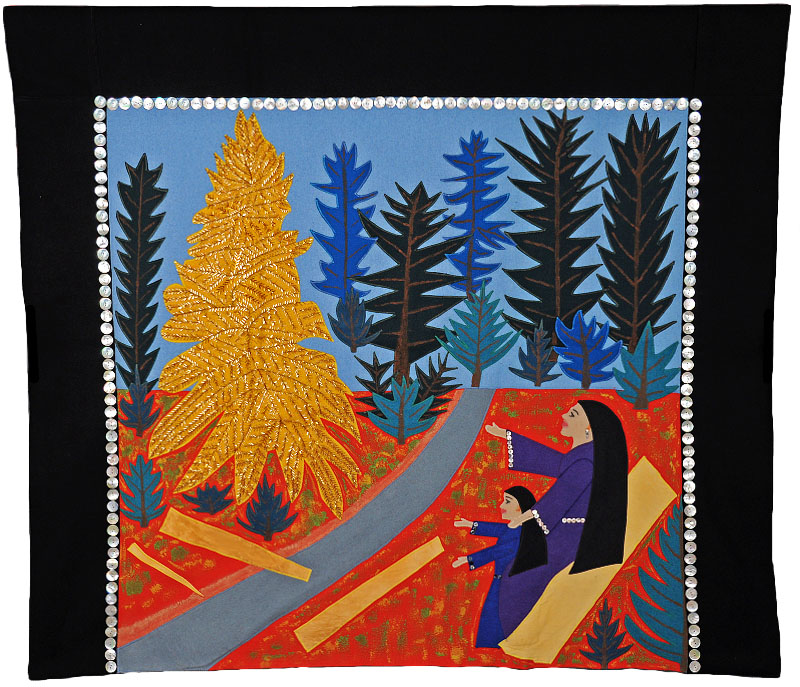
Hazel Wilson was born in 1941 in Tiiyaan, a small village on the west coast of Graham Island of Haida Gwaii. Known as Jut-ke-Nay (“the one they speak of”) in her native Haida language, Wilson is a member of the Duugwaa St’Langng 7laanaas clan. When she was 14 years old, Wilson’s aunts told her she would become a maker of appliquéd button blankets—ceremonial robes created from melton cloth and decorated with pieces of abalone, copper and pearl buttons. Mastering her designated craft in due course, Wilson went on to produce hundreds of robes for family members and other Haida. Following her relocation to Vancouver with her children in the early 1970s, she continued making blankets both for personal use by her relatives and as works of contemporary art meant to hang on walls. Now her extended family’s official matriarch, Wilson is widely recognized as a significant innovator of Haida artistic tradition.
While the majority of her blankets feature various traditional family crests, Wilson has also long specialized in robes that depict K’iid K’iyaas, a giant golden Sitka Spruce that, until recently, stood on the banks of the Yakoun River on Haida Gwaii. Hazel Wilson: The Story of K’iid K’iyaas chronicles the life and background of this unique and spiritually significant tree through a series of 14 recent full-sized blankets. According to Haida legend, K’iid K’iyaas grew out of another golden spruce that lived on the same spot over 800 years ago. The first blanket shows Hazel listening to her grandmother relating stories and legends about the Golden Spruce. The second depicts Hiilang Jaat (the original golden spruce that, according to the legend, was a transformed woman) and K’iid K’iyaas together before she became the first golden spruce. The next six robes illustrate the life of Hiilang Jaat up to the point where she dies and becomes the Golden Spruce. Seven following robes portray different episodes in the life of K’iid K’iyaas—originally the woman’s nephew and now also transformed. Legend and contemporary history merge—or collide—in two of these images as Wilson depicts the tree’s tragic and well-publicized demise in very recent times, the victim of a misguided protester’s violent act. The series concludes with a final image that provides hope for the future.
Expressing emotions that range from youthful joy to tragic suffering, this stunning and powerful body of work draws attention to issues that touch Haida and non-Haida alike.
